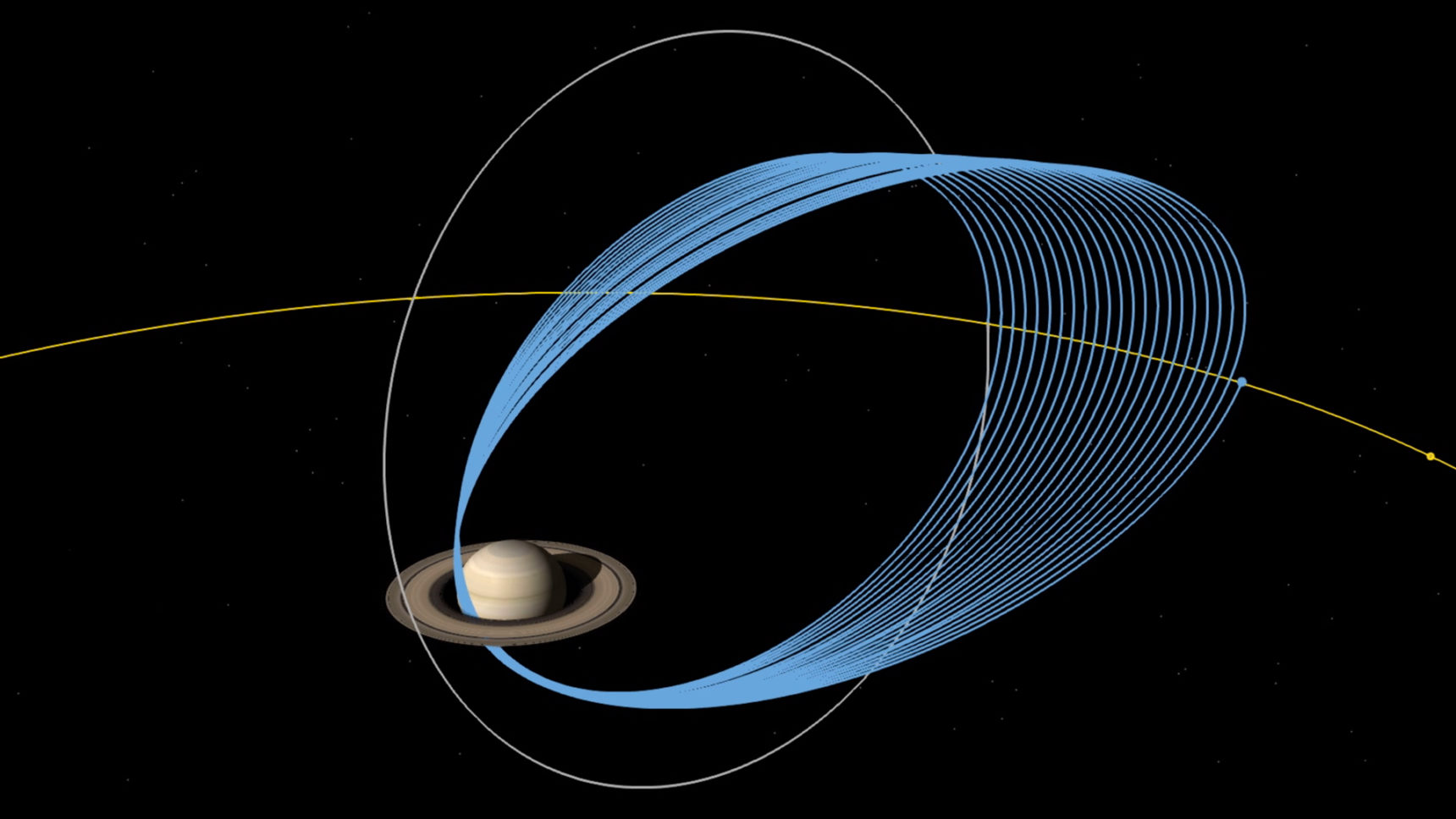Are Saturn’s Rings Really as Young as the Dinosaurs?
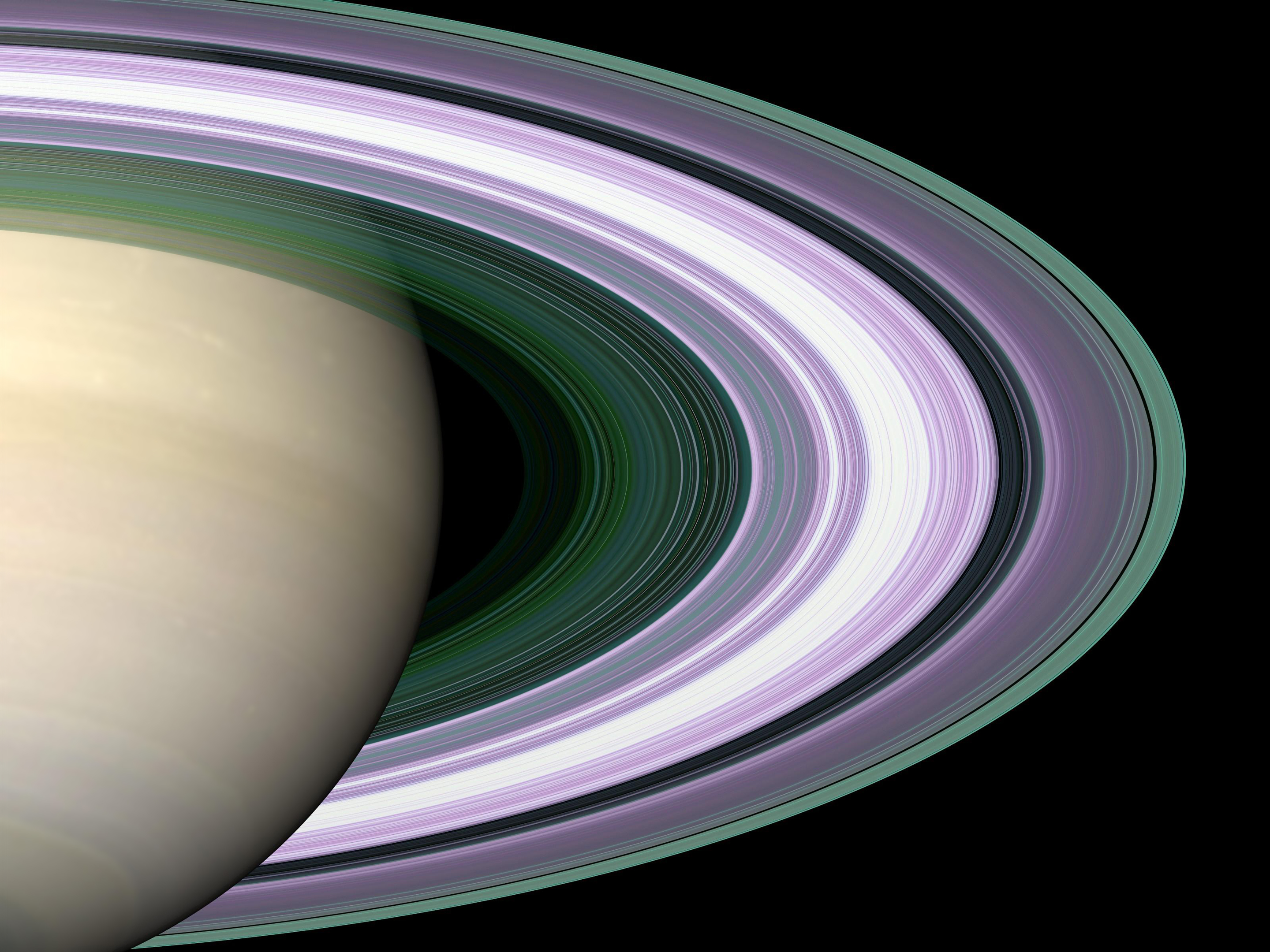
Saturn’s rings are largely made of ice particles, with some dust mixed in. In this false-color image, purple bands contain particles more than 5 cm across. Green regions have particles under 5 cm, and blues contain some small, pea-like particles. Giant, boulder-size chunks of ice can be found throughout the rings.
Introduction
The Cassini spacecraft perished in a literal blaze of glory on September 15, 2017, when it ended its 13-year study of Saturn by intentionally plunging into the gas giant’s swirling atmosphere. The crash came after a last few months of furious study, during which Cassini performed the Grand Finale — a sensational, death-defying dance that saw the spacecraft dive between the planet and its rings 22 times.
As new perspectives often do, this one revealed a surprise. Previously, planetary scientists had assumed that Saturn’s rings were as old as the solar system itself — about 4.5 billion years old. But cosmic clues hidden deep within the rings caused some Cassini scientists to massively revise this figure. The rings aren’t as old as the solar system, they argued in a paper published this summer in the journal Science. They emerged no more than 100 million years ago, back when dinosaurs roamed Earth.
An explosion of media coverage linking the rings to the age of dinosaurs helped to quickly solidify the new findings in the public’s eye. If you enter the search phrase “how old are Saturn’s rings,” Google returns the answer “100.1 million years.”
Aurélien Crida, a planetary scientist at the Côte d’Azur Observatory, was incredulous at this definitive declaration. “I was a bit pissed off by how it was assessed, that the rings are young, and it’s over,” he said.
He and other skeptics have pointed out that there are a lot of potential problems with the argument, from the physics of the ring pollution to the origins of the rings themselves. “The rings look young, but that doesn’t mean the rings are really young,” said Ryuki Hyodo, a planetary scientist at the Japanese Aerospace Exploration Agency. “There are still some processes that we are not considering.”
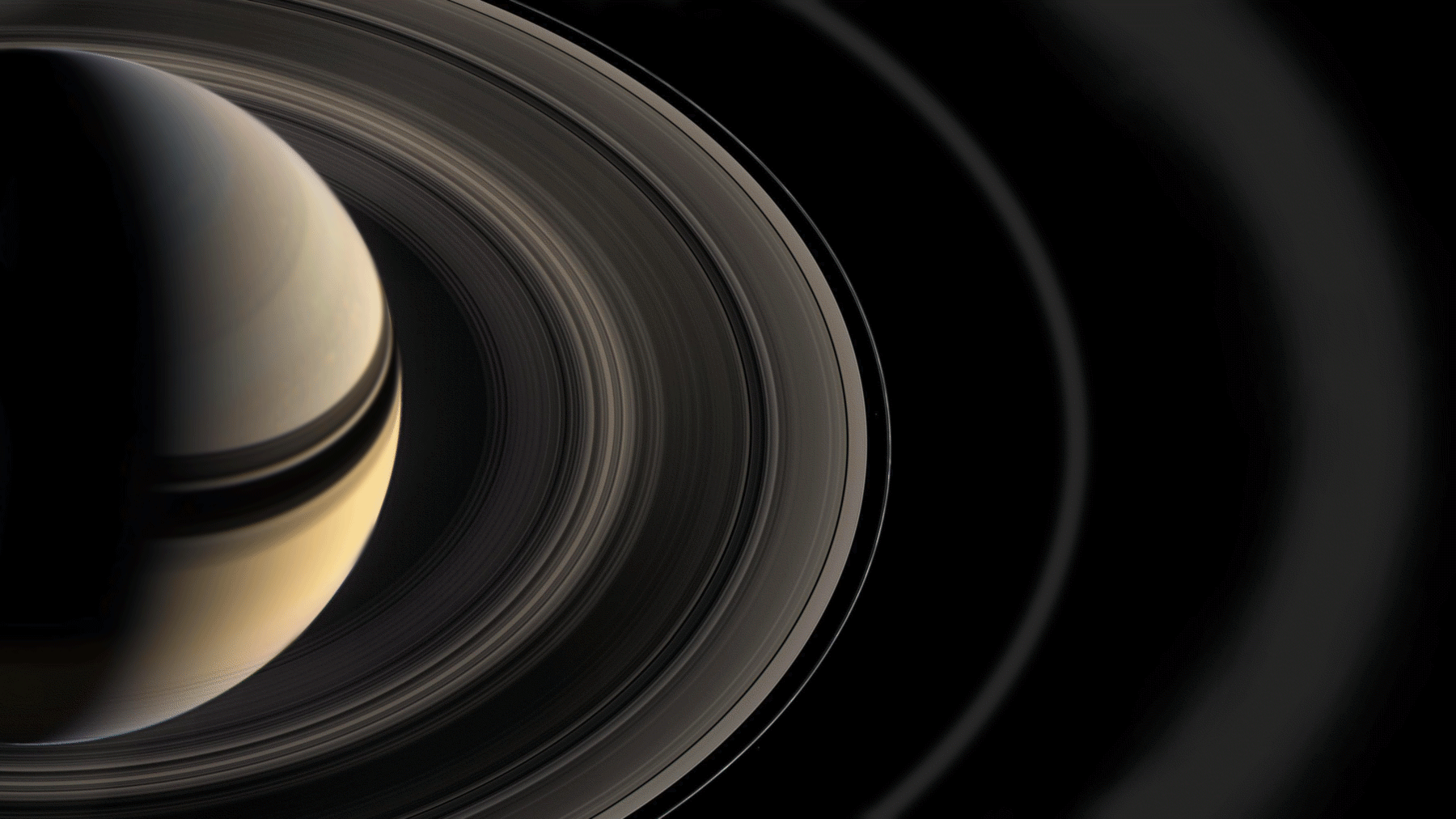
The rings were named alphabetically in the order they were discovered. Starting from the innermost ring, the D ring is followed by the C, B, A, F, G and E rings.
In response to the hypothesis, Crida co-authored a commentary for Nature Astronomy, published in September, that presented a litany of uncertainties. The dinosaurian age of the rings is an eye-catching claim, said Crida, but it circumvents an uncomfortable reality: Too many uncertainties exist to permit any firm estimate of the age of the rings. Despite Cassini’s heroics, “we’re not really far ahead of where we were almost 40 years ago,” back when the Voyager probes first took a good look at Saturn, said Luke Dones, a planetary scientist at the Southwest Research Institute in Boulder, Colorado.
Proponents of the younger age stand by their work. “Every new exciting result gets challenged,” said Burkhard Militzer, a planetary scientist at the University of California, Berkeley and a co-author of the Science paper. “It’s the natural way to proceed.”
The debate is about more than the narrow question of the rings’ age. The age of Saturn’s rings will influence how we understand many of Saturn’s moons, including the potentially life-supporting world Enceladus, with its frozen ocean. And it will also push us closer to answering the ultimate question about Saturn’s rings, one that humans have wondered about since Galileo first marveled at them over 400 years ago: Where did they come from in the first place?
Age From a Scale
We know the age of the Earth because we can use the decay of radioactive matter in rocks to work out how old they are. Planetary geologists have done the same for rocks from the moon and Mars.
Saturn’s rings, predominantly composed of ice fragments with trace amounts of rocky matter, don’t lend themselves to this kind of analysis, said Matthew Hedman, a planetary scientist at the University of Idaho. That means age estimates have to be based on circumstantial evidence.
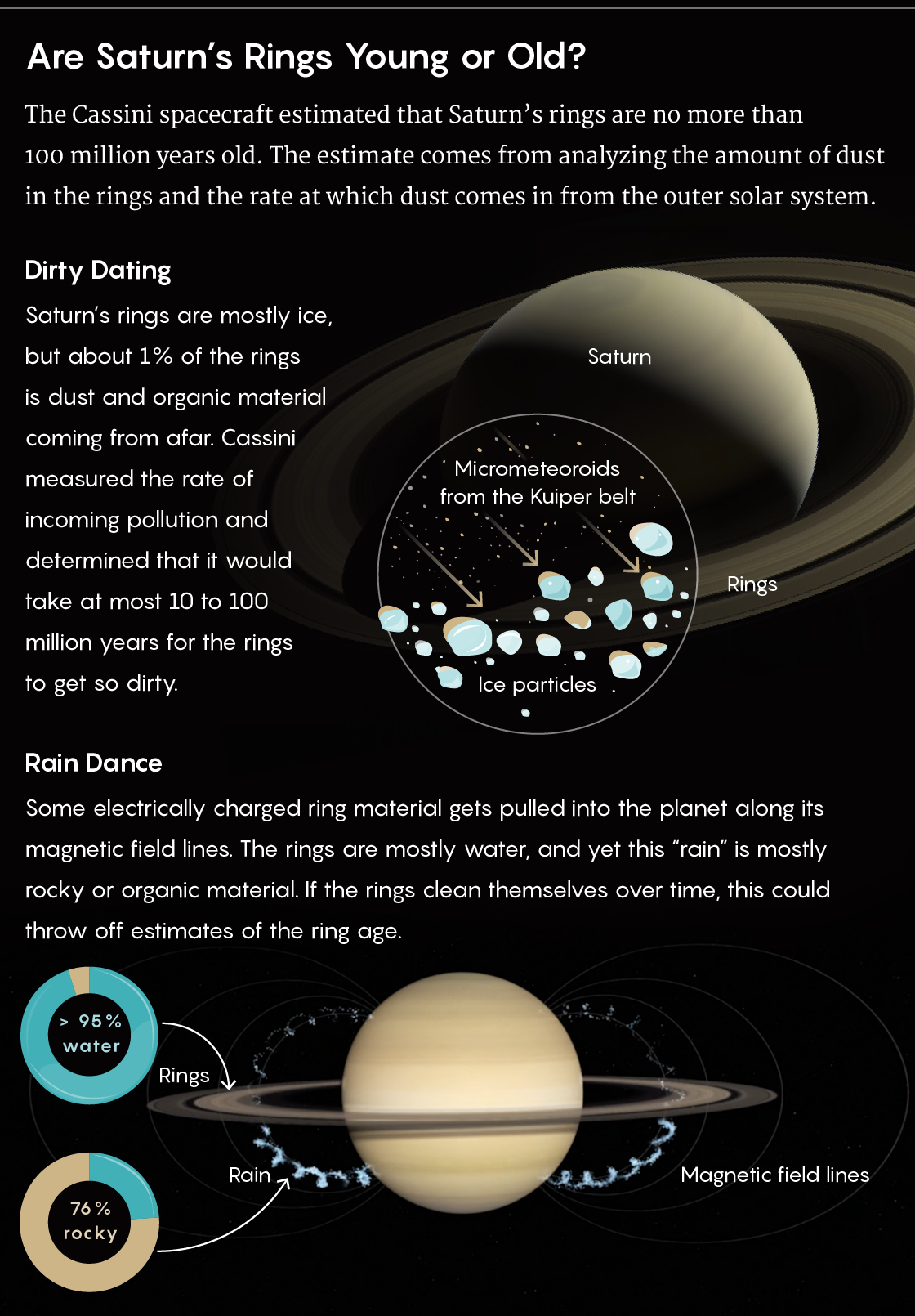
Lucy Reading-Ikkanda/Quanta Magazine, Source: NASA/JPL-Caltech/Space Science Institute; NASA’s Goddard Space Flight Center
That evidence, in part, comes from dust. Think of the icy rings as resembling a field of snow: After a pristine start, soot from afar gradually pollutes it. In order to estimate the age of the snow, scientists have to measure the rate at which soot is falling, as well as the total amount of soot already there.
Cassini did the first part with its Cosmic Dust Analyzer, which found that Saturn’s rings are being steadily polluted by darker material — a mixture of rocky dust and organic compounds. Most of this material is being delivered by micrometeoroids from the Kuiper belt, a distant source of icy objects beyond the orbit of Neptune. The spacecraft also found that the sooty material currently makes up about 1% of Saturn’s icy rings.
To uncover the total mass of cosmic soot in the rings, researchers then had to weigh the rings themselves. Thankfully, Cassini’s Grand Finale created just such an opportunity. As the spacecraft swooped through the rings, it precisely measured the net gravitational pull at every point. Since gravity fields are dependent on an object’s mass, this feat allowed scientists to directly weigh the entire ring system.
With this information — the amount of soot and the rate at which it is falling — scientists estimated that it would have taken between 10 million and 100 million years for that proverbial snowy field to find itself sullied. The findings were generally well received. “Most of the community today is convinced that the rings were formed recently,” said Luciano Iess, an expert in aerospace engineering at Sapienza University of Rome and the Science study’s lead author.
Yet the pollution argument isn’t watertight. Dones points out that the Cassini team analyzing the incoming pollution has not settled on a precise rate. Various values have appeared in several conference presentations, but a final figure hasn’t yet been published. In the Science paper, the researchers chose one of these values and came up with a youthful ring age. But this ambiguity has been “causing a lot of consternation,” said Paul Estrada, a planetary scientist at NASA’s Ames Research Center who is a member of the Cassini team analyzing pollution.
The pollution rate may have also changed relatively recently. “It could just be that the bombardment rate is unusually high at the moment,” said Crida, even if we can’t say what would cause such a spike. In theory, a future mission to Saturn could dig out a rocky core from an old moon, one that preserves the pollution flux over time, said Tracy Becker, a planetary scientist at the Southwest Research Institute in San Antonio, Texas. But such a mission would be decades in the future.
We also don’t fully understand the physics behind the ring darkening. The micrometeoroids from the Kuiper belt slam into the rings’ icy chunks at such high speeds that the impacts are like little explosions, suggesting that not much of the micrometeoroids adheres. This has led to a fudge factor in the literature — guesstimates that 10% of the micrometeoroidal matter sticks to the ice and pollutes it.
Dones said that the Dust Accelerator Laboratory at the University of Colorado, Boulder may be able to replicate this impact process and give us a better idea of the staying power of the pollutants. But for now, we’re in the dark.
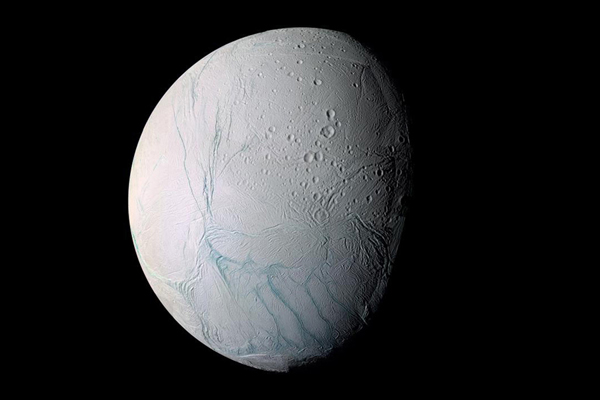
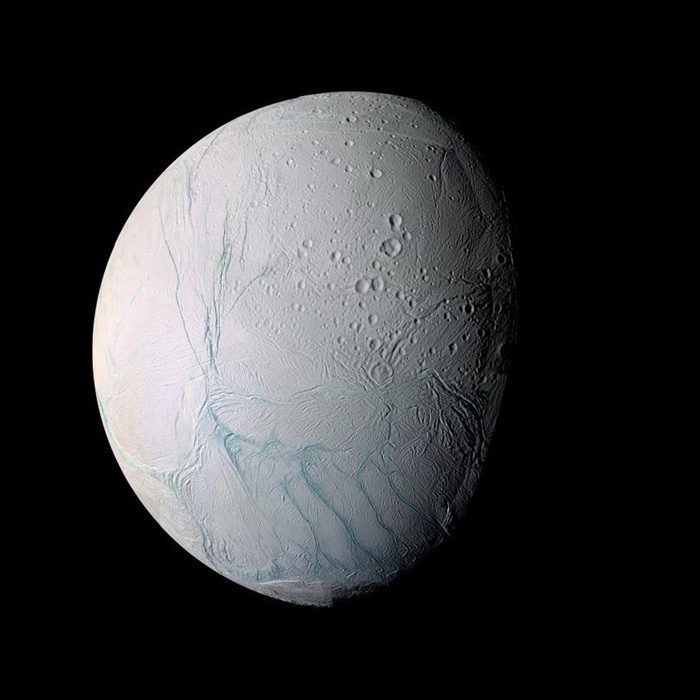
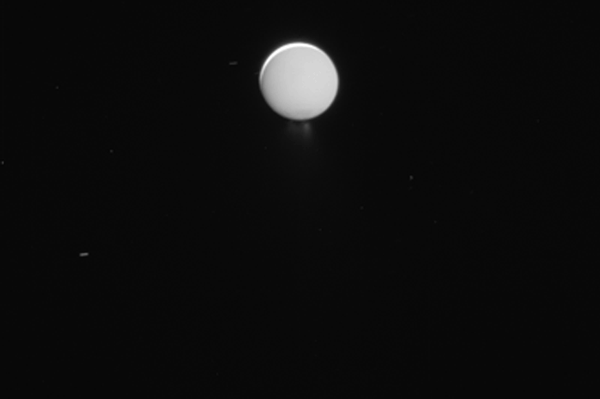
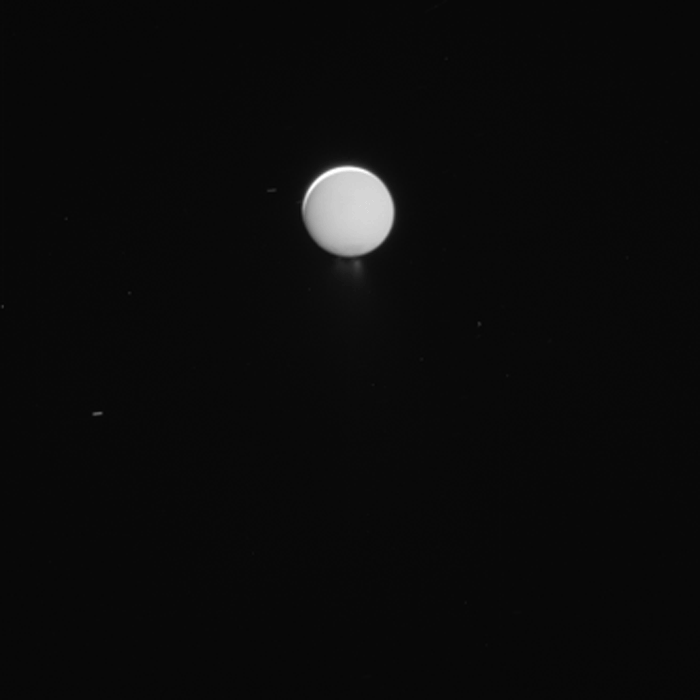
Enceladus is an icy world that hides a subsurface ocean of salty water. Geysers on its surface, seen at the bottom of the moon in the second image, shoot material out hundreds of miles into space, potentially feeding Saturn’s rings.
Enceladus is an icy world that hides a subsurface ocean of salty water. Geysers on its surface, seen at the bottom of the moon in the image on the right, shoot material out hundreds of miles into space, potentially feeding Saturn’s rings.
Crida’s commentary also suggested that an incognito planetary scrubber may be removing pollution to make the rings appear deceptively youthful. We’ve known since the Voyager days that material from the rings rains down onto the surface of Saturn. But we haven’t known what that material is made of. Cassini measured the rain using two separate instruments. Both found that it contains surprisingly little ice — as little as 24%. “That’s very confusing, given that the rings are measured to be over 95% water,” said James O’Donoghue, a planetary scientist at the Japanese Aerospace Exploration Agency. The “rain” is preferentially removing dirt, but no one knows why.
“There is something that is cleaning the rings,” said Crida. “We don’t know what it is, but it is now an observed fact, it’s not just a conjecture.”
Crida said that perhaps the ice ejected by micrometeoroid impacts tends to reattach itself to the rings, while the ejected pollutants rain out. Becker conjectures that pollution is being preferentially ejected by impacts, regardless of whether the ice is reattaching itself in this manner. And Hyodo wonders whether the geysers on Enceladus’ south pole are adding more water, diluting the rings’ pollution. But no one knows for sure.
But not everyone believes that there’s a lot of cleaning going on. “Getting the stuff dirty is easy,” said Militzer. “Cleaning is hard.”
Where They Came From
What if, said Crida, the pollution argument is correct? What if the rings have always been exposed to an unchanging influx of cosmic dust, and the rings are 100 million years old at most? Then we would have to explain how the rings formed so recently, which is a tricky prospect.
First, we have no idea what created the rings, so assigning them an origin story at any point in time is difficult. The rings may be the vestige of a comet torn asunder by Saturn’s gravitational tides, or the product of a collision between a comet and an icy moon, or the result of something that disturbed the orbit of several moons, causing them to smash into each other.
A sample-return mission to Saturn’s icy loops could find the remnants of the original bodies that were annihilated and used to forge the rings, said Militzer. But no such mission is forthcoming.
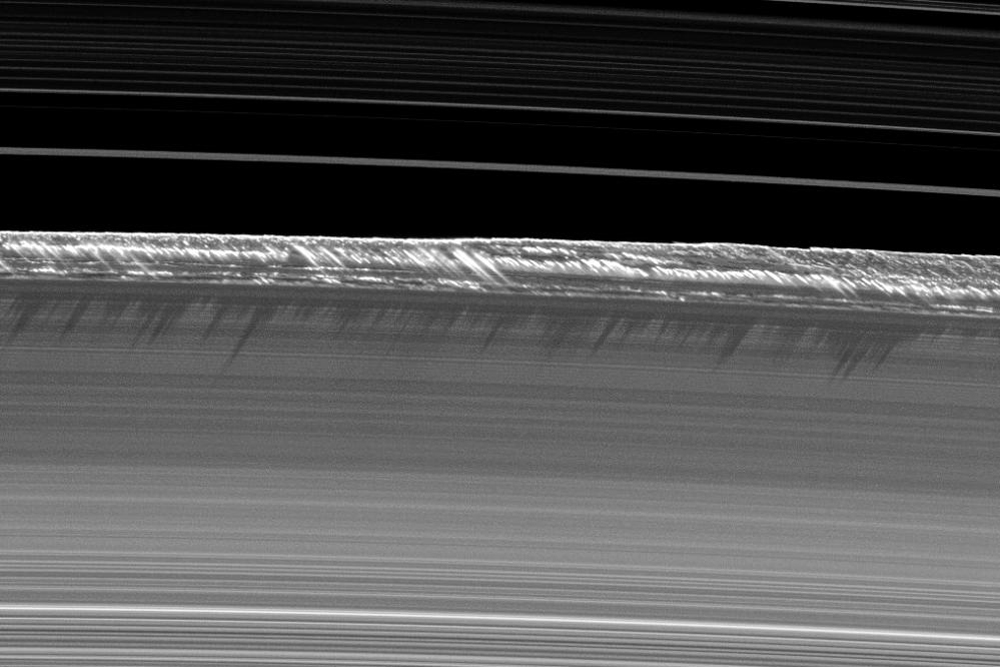
At the edge of Saturn’s B ring, vertical structures rise as high as 2.5 kilometers above the plane of the rings, casting long shadows. The typical thickness of the rings is only about 10 meters.
Second, the solar system’s first billion years or so were a pinball-like pandemonium, with protoplanetary objects constantly colliding. These days, said Crida, things are far more settled, so the likelihood of a catastrophic collision leading to Saturn’s rings is far lower. If they did form in a recent cataclysm, said Militzer, such an event would dramatically change our perspective: It would imply that our planetary neighborhood hasn’t entirely outgrown the bedlam of its primeval days just yet.
Linda Spilker, the Cassini project scientist at NASA’s Jet Propulsion Laboratory, said clues may lie in Saturn’s moons, as their development is somewhat linked to that of the rings. But their own stories are also riddled with uncertainties, from their origins to their ages.
A 2016 model, using the current positions of the moons to peer backward through time, suggests that the present system of rings and inner moons could have been created when a pair of midsize moons smashed into each other about 100 million years ago.
But the ability of such a collision to form the rings we see now, said Dones, is an active controversy; a much-debated 2017 study, for example, suggests that not enough material would have been available to make today’s rings. “It just doesn’t work,” said Crida, adding that the only way this two-moon impact could have created all those moons and rings is through “magic.”
“The question of whether the rings are old or young will one day be definitively answered,” said Becker. But right now, there is enough evidence on both sides that “there’s still plenty to argue about before we can say anything conclusively.”
While the past is unclear, the future seems more certain. The rings may look permanent, but the opposite is true. Observations from a telescope atop Hawaii’s Mauna Kea volcano found torrents of material raining out from the rings. When scientists add this to the material detected by Cassini, they estimate that the rings will disappear completely in 100 million years.
It appears that time is running out for Saturn’s rings, a “symbol of astronomy,” Crida said, one universally admired for its staggering beauty. Like many, he considers it fortunate that humanity and the rings coexist — giving us plenty of opportunity to argue about the secrets they hold.
This article was reprinted on Wired.com.
